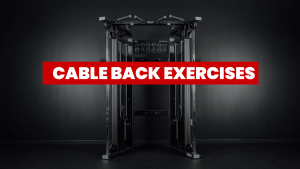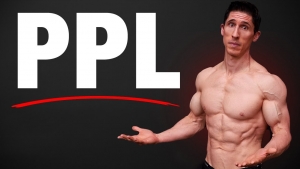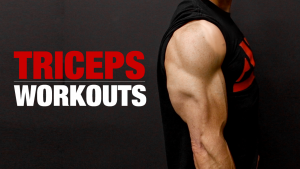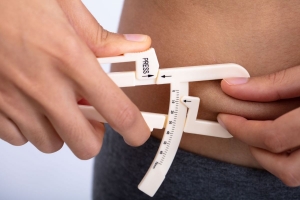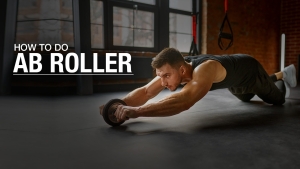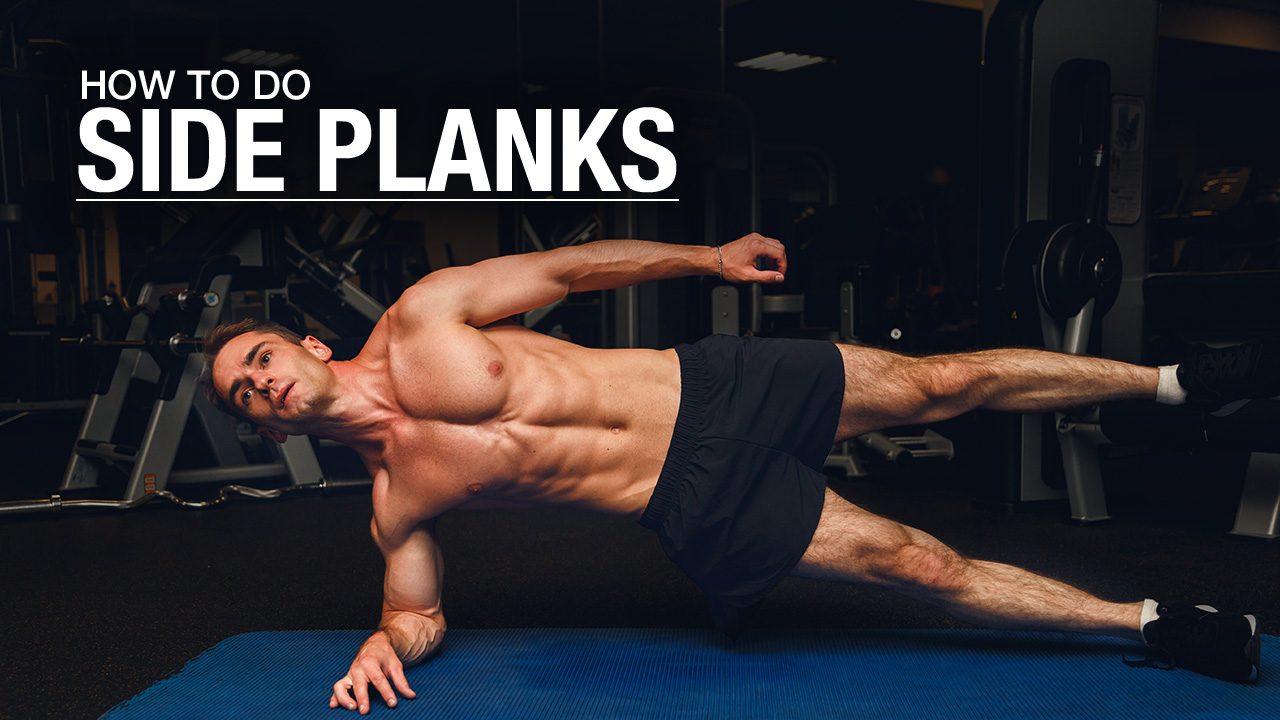
HOW TO PERFORM SIDE PLANKS
I hate traditional Side Planks. There, I said it.
The truth is, Side Planks aren’t bad in themselves—they’re actually a solid exercise for a very small group of people.
But here’s the kicker:
Side Planks have become the epitome of mediocrity when it comes to functional ab strength.
We’re spending way too much time on the ground, perfecting a static move that doesn’t push our limits.
If you’re not challenging yourself with tougher variations, you’re wasting your time.
It’s time to step up and embrace more demanding exercises that hit your hips, abs, and core stability in ways a standard Side Plank never will.
Ready to break out of the Side Plank rut? Let’s get to it.
SIDE PLANKS: MUSCLES TARGETED
When it comes to maximizing the effectiveness of side planks, the mind-to-muscle connection is a must.
Engaging your entire body, from the hips to the shoulders, ensures proper form and optimal core activation.
This connection helps prevent muscle imbalances and enhances core stability, making each rep count.
Whether you’re performing a full-fledged Side Plank, an Elbow Plank, or exploring niche Side Plank exercise variations, focusing on the muscle groups involved, such as the obliques and hip abductors, will elevate your core strengthening routine.
Remember, proper engagement and form are key to transforming this oft-forgotten side plank exercise into a powerhouse move for your core workouts.
Here are the major muscle groups involved during the Side Plank exercise:
EXTERNAL OBLIQUES


The external obliques are muscle fibers that run diagonally from the sides of the ribcage down to the pelvis, playing an important role in rotation and controlling rotational movements.
These abdominal muscles not only contribute to core strength but also enhance the appearance of the six-pack by framing the rectus abdominis.
Engaging your external obliques during various core exercises, like the Classic Side Plank or Plank variations, is essential for maintaining proper form and core stability.
INTERNAL OBLIQUES


The internal obliques run in the opposite direction from the external obliques, starting from the outer edge of the ribcage near the hip and moving up and in toward the midline of your body.
When performing a side plank, the internal obliques work alongside the external obliques to keep your torso stable and aligned.
By engaging your internal obliques, you ensure proper form and prevent muscle imbalances, which can lead to pain and injury.
In exercises like the classic side plank, where your left forearm is on the floor and your body weight is supported by your left elbow, left knee, and left foot, the internal obliques help maintain a neutral position and provide extra shoulder stability.
This is especially important during variations that add a challenge, such as lifting the top leg or incorporating stability balls.
TRANSVERSE ABDOMINIS (CORE STABILIZER MUSCLES)

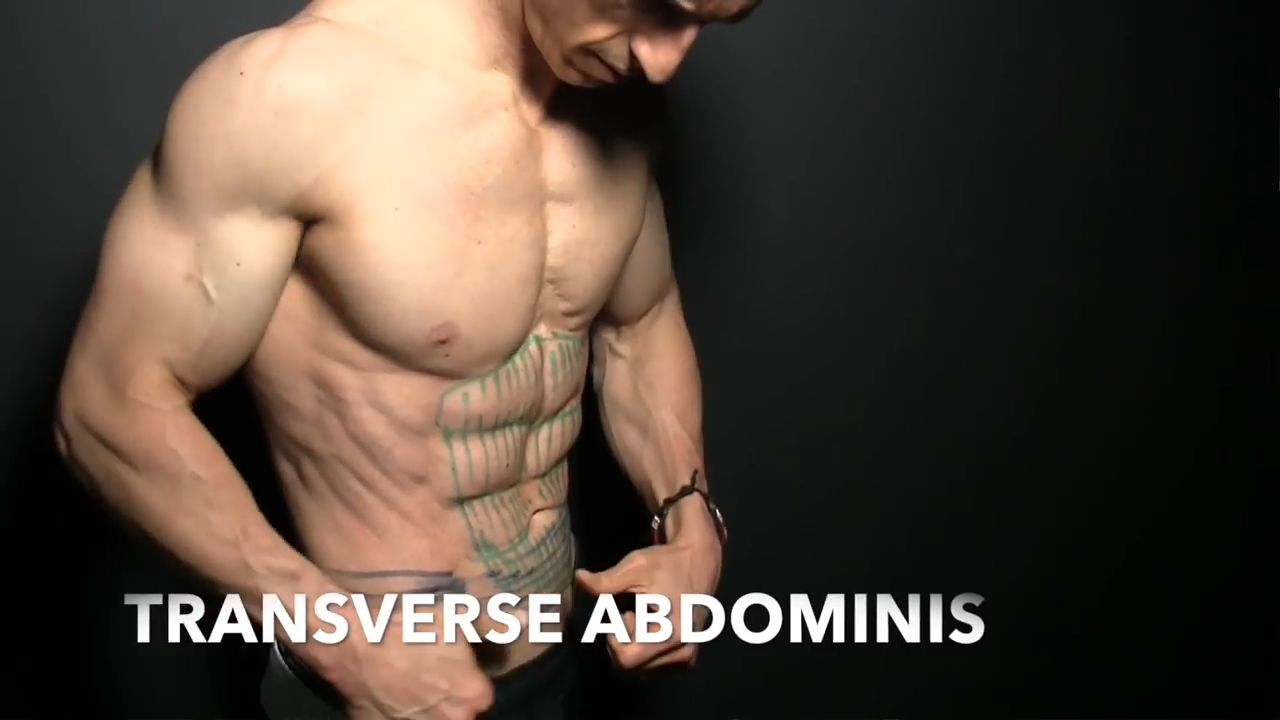
The transverse abdominis runs like a weight belt around your waist, acting as one of the deepest and most crucial core stabilizers.
When you engage in exercises like ab vacuums or suck in your abs, it’s the transverse abdominis doing the heavy lifting.
This muscle is vital for core stability and plays a significant role in Side Planks.
During a side plank, the transverse abdominis works to maintain a stable core, preventing muscle imbalances and ensuring proper form.
Starting in a traditional Side Plank position with your left forearm on the floor and your body in a straight line from head to feet, the transverse abdominis helps keep your hips elevated and your core tight.
This engagement is essential for reducing pain and maximizing the effectiveness of your core workouts.
RECTUS ABDOMINIS


The rectus abdominis, famously known as the “six-pack” muscle, extends vertically along the front of your torso.
During a Side Plank, it helps to stabilize your torso and prevent your lower back from sagging.
This muscle works in conjunction with the obliques and transverse abdominis to keep your core tight and your body in a straight line.
Engaging the rectus abdominis during a side plank helps to enhance core strength and stability, making the exercise more effective in targeting the entire core.
SERRATUS

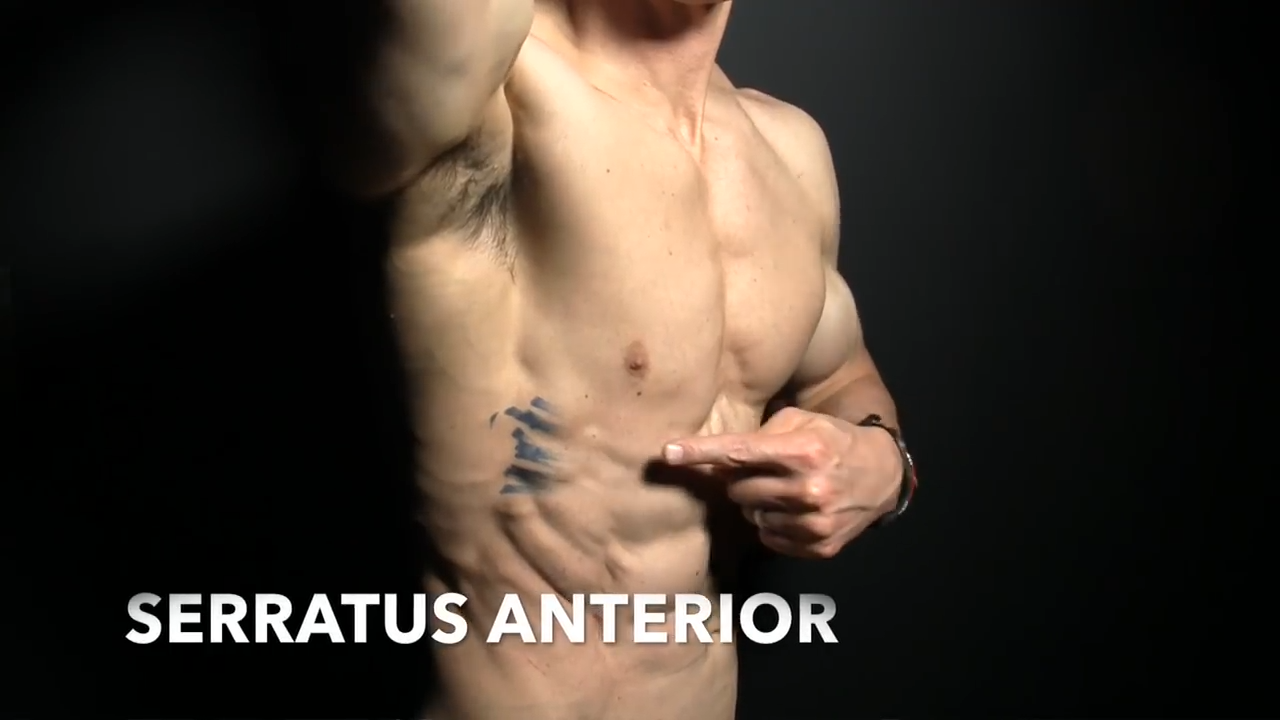
The serratus anterior is an important upper body muscle that often flies under the radar.
If you’re not familiar with it, pay attention!
This plays a key role in trunk and core stabilization muscles, ensuring your shoulder blades stay connected to your rib cage.
When performing a Side Plank, the serratus anterior works closely with the oblique muscles to control the rotation and stability of your torso.
Here’s how you can engage it:
Focus on pushing through your left forearm into the floor, which activates the serratus anterior and helps keep your shoulder blades stable.
Keeping your core tight, use the serratus anterior to stabilize your upper body, preventing your shoulder from collapsing and ensuring proper form.
Strengthening the serratus anterior enhances shoulder health and upper body stability, crucial for maintaining a strong, athletic position during a side plank.
HOW TO DO SIDE PLANKS
Ready to master the Side Plank?
I’m going to teach you how to do the Side Plank, but here’s the catch:
I’m not covering the basics of the standard Side Plank.
As I mentioned above, most people need something better and more challenging. So, I’m going to dive into the best Side Plank variations that push your limits and maximize your results.
These advanced moves are designed to elevate your core strength, stability, and overall fitness.
Ready to get started?
First up, if you want to take your planks to a more functional and productive level, it’s time to focus on controlling rotation.
This Side Plank variation, known as threading the needle, is perfect for that.
SIDE PLANK: THREAD THE NEEDLE


HOW TO DO THE SIDE PLANK THREAD THE NEEDLE:
- Begin in a classic Side Plank position with your left hand on the floor, your left elbow directly beneath your left shoulder, and your feet staggered for stability.
- Ensure your body forms a straight line from head to feet. Keep your hips lifted and your core muscles engaged, maintaining a neutral position to avoid poor form habits.
- Activate your transverse abdominis and oblique muscles by bracing your core. This will help maintain stability throughout the movement.
- With your legs remaining static, rotate your upper body and thread your right arm underneath your torso, reaching as far back as possible. This rotation should come from your upper body while keeping your hips stable.
- Reverse the movement by rotating your upper body back to the starting position, extending your right arm upwards towards the ceiling. Ensure your hips stay lifted and your core remains engaged.
- Continue this threading and extending motion for the desired number of repetitions, focusing on controlled movements to maximize core activation and oblique strength.
- Remember, maintain a neutral position, and keep your hips lifted to avoid poor form habits. This exercise is an oblique challenge that will elevate your core workouts to the next level.
WHAT MAKES IT EFFECTIVE: By incorporating rotation, you engage your oblique muscles more effectively, adding a significant challenge to your core routine.
Alright, let’s take your planks to the next level by getting the bottom moving on a fixed top with alternating toe taps.
Instead of just rotating your upper body, let’s get the lower body involved.
In this variation, you’ll keep your upper body stable while tapping your toes forward and backward. The key here is control. Don’t fall forward or backward. Instead, slowly and deliberately tap your toes, maintaining a stable core the entire time.
This movement really challenges your oblique muscles and core stability.
You can see in the video below that I’m working hard to keep everything controlled and engaged.
ALTERNATING TOE TAPS SIDE PLANK


HOW TO DO THE ALTERNATING TOE TAPS SIDE PLANK:
- Start in a Side Plank with your left arm on the floor, elbow directly under your shoulder, and your body forming a straight line from head to feet.
- Engage your core muscles to keep your upper body stable and your hips lifted throughout the exercise.
- Slowly tap your right foot forward, then bring it back to the starting position. Next, tap your right foot backward.
- Focus on keeping your movements slow and deliberate. Avoid letting your body tip forward or backward. Your goal is to maintain stability and control.
- This exercise challenges your obliques and core stability. Keep your hips elevated and your core tight to maximize the benefits.
- Alternate tapping your toes forward and backward for the desired number of repetitions. Concentrate on maintaining a steady and controlled movement throughout.
WHAT MAKES IT EFFECTIVE: This isn’t just about moving your legs; it’s about controlling the rotation and maintaining proper form. So, give it a try, and feel the burn!
Let’s crank up the intensity with a hip drop variation. This move isn’t just about holding a static plank.
We elevate the plank and add a hip drop.
Now, when you drop your hips, you’re adding a rotation element. This rotation component is often overlooked, but it’s crucial for maximizing core strength.
Trust me, you can do this.
You just need to open your eyes to the possibilities beyond a standard Side Plank.
SIDE PLANK HIP DROP

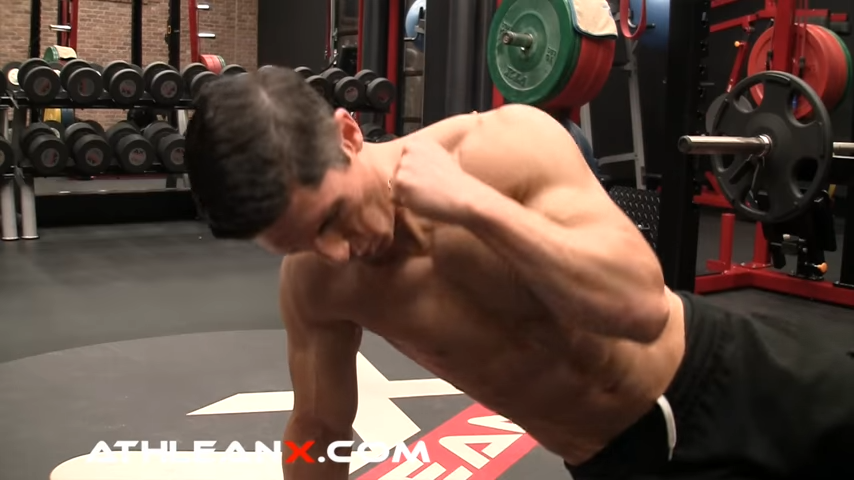
HOW TO DO THE SIDE PLANK HIP DROP:
- Begin in a classic Side Plank position. Place your left arm on the floor, left elbow directly under your left shoulder, and stack your feet.
- Keep your core muscles tight, your hips lifted, and maintain a neutral position. This sets the base for proper form.
- Slowly lower your hips towards the floor, adding a slight rotation as you descend. This movement should be controlled and deliberate.
- As you lift your hips back up, rotate slightly to engage your oblique muscles even more. You’re not just moving up and down; you’re incorporating a rotation that challenges your core strength and stability.
- Keep your movement dynamic but controlled. Avoid letting your body sway forward or backward. Focus on maintaining a stable core the entire time.
- Continue this hip drop and lift with rotation for the desired number of reps.
- Remember, this isn’t just a standard plank—it’s a core exercise that targets your oblique muscles, hip abductors, and transverse abdominis.
WHAT MAKES IT EFFECTIVE: As you drop your hips down, rotate slightly and then lift back up, you’re not just moving up and down statically. You’re incorporating rotation, which hits those obliques even harder.
Let’s talk about hip strength. Seriously, it’s an epidemic.
Weak hips and glutes are everywhere, and we need to fix that.
One of the best ways to address weak hips is by incorporating bottom leg movement during a Side Plank.
SIDE PLANK WITH BOTTOM LEG MOVEMENT


HOW TO DO THE SIDE PLANK WITH BOTTOM LEG MOVEMENT:
- Get into a Side Plank position but stagger your feet. Place your left forearm on the floor, with your left elbow directly under your shoulder.
- As you lift into the Side Plank, focus on keeping your core tight and your hips elevated.
- Now, here’s the key move—start moving your bottom leg. This movement forces your top leg’s adductor to stay contracted and strong to hold you up.
- Keep your hips steady and avoid letting them drop. This exercise is all about stability and strength in your hips and glutes.
WHAT MAKES IT EFFECTIVE: By incorporating the bottom leg, you can address the issue of weak hip flexors, strengthening them as well as your core.
We could do the reverse as well. We can keep the bottom leg there, and now move the top leg.
We’re now working the abductor; the outside hip muscles of that bottom leg.
If this muscle were to give in, I would simply drop down to the floor. This exercise allows us to move our top leg dynamically.
Again, this is much more involved than a Static Plank, and you’ll get so much more out of it.
SIDE PLANK WITH TOP LEG MOVEMENT


HOW TO DO THE SIDE PLANK WITH TOP LEG MOVEMENT:
- Begin in a side plank position with your left forearm on the floor and your feet staggered.
- Make sure your left elbow is directly under your shoulder.
- Lift into the side plank, keeping your core tight and your hips elevated.
- Now, instead of moving the bottom leg, start moving the top leg. This targets the abductor muscles on the outside of your bottom hip.
WHAT MAKES IT EFFECTIVE: By moving the top leg, you’ll target the abductor muscles, which is often overlooked in lower body workouts.
Next up, let’s talk about the Plank Press.
STRAIGHT LEG TO HAND SIDE PLANK


HOW TO DO THE STRAIGHT LEG TO HAND SIDE PLANK:
- Start in a classic Side Plank position with your left forearm on the floor, your left elbow directly under your shoulder, and your body in a straight line.
- Keep your core tight and your hips lifted to maintain a stable base. This is crucial for proper form and maximizing the benefits.
- Extend your right arm overhead. Raise your right leg straight out in front of you. Keep it fully extended and parallel to the floor.
- Your goal is to bring your hand and foot together, meeting in the middle.
- With control, bring your right hand and right foot together, tapping your toe with your hand. Focus on keeping your movements smooth and controlled.
- Slowly return your arm and leg to the starting position, maintaining your balance and keeping your core engaged.
- Continue this movement for the desired number of reps, ensuring each tap is deliberate and precise.
- Once you wrap up on one side, flip over and repeat on the other side.
WHAT MAKES IT EFFECTIVE: This exercise incorporates dynamic movement that engages multiple muscle groups, including your obliques, hip abductors, and shoulder stabilizers for enhanced core strength and stability.
SIDE PLANK BRIDGE TWISTS


HOW TO DO THE SIDE PLANK BRIDGE TWIST:
- Begin in an elbow plank position, keeping your body in a straight line from head to heels.
- Rotate into a Side Plank position, engaging your core and lifting your hips.
- Drive your hips up into a side plank lift, then slowly drop them down with controlled, eccentric movement. Add a slight rotation as you drop to really engage your obliques.
- As you come back up, focus on driving your hips up high, creating strong lateral core flexion. This is where the magic happens—really push those hips up.
- After completing your reps on one side, switch to the other side and repeat.
- Take this movement slow, keeping your core tight and your movements controlled the entire time.
WHAT MAKES IT EFFECTIVE: Your shoulders stay rock solid, while your hips do all the heavy lifting.
SIDE PLANK WALK THROUGHS


HOW TO DO THE SIDE PLANK WALK THROUGH:
- Get into a static side plank position.
- Walk your feet across, bringing your knee up towards your chest.
- Walk your feet back to the starting position and repeat the movement.
- Your mission is to stay as rigid as possible on the bottom side, avoiding any collapse or flexion.
- Keep your core locked in the entire time.
WHAT MAKES IT EFFECTIVE: When you drive the other leg up towards your chest, you’re supporting the entire Side Plank on just one leg, not two. This creates a killer unilateral exercise that hammers one side of your obliques at a time.
PLANK PRESS

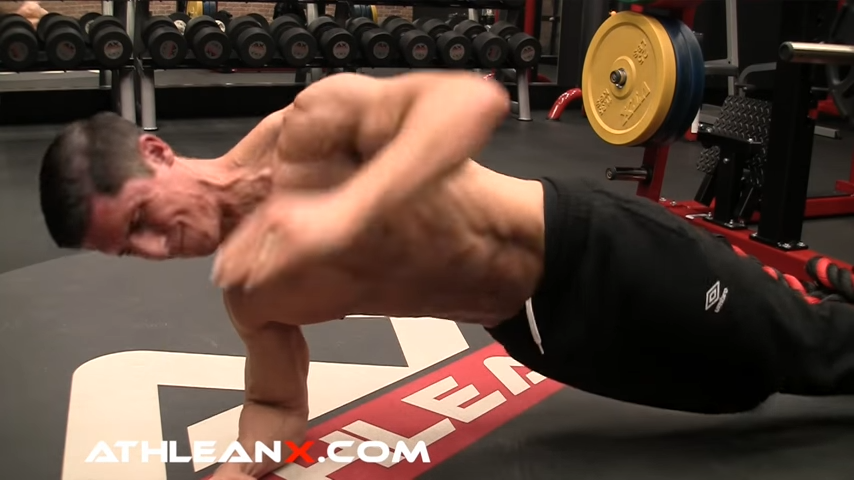
HOW TO DO THE PLANK PRESS:
- Start in a plank position with your forearms on the floor, elbows directly under your shoulders, and your body in a straight line.
- Rotate your body up and over into a Side Plank. Extend your arm above.
- Reverse the movement, then lower your chest towards the floor. Keep your core tight and your body aligned.
- Engage your chest, shoulders, and core throughout the movement.
WHAT MAKES IT EFFECTIVE: It’s like a Pushup and a Plank combined, but way more intense than your Standard Plank.
SIDE PLANKS: COMMON MISTAKES
The Side Plank variations above are all fantastic core exercises but performing them with poor form can undermine your progress and even cause pain.
Here are some common mistakes to avoid:
IMPROPER ALIGNMENT
Ensuring your body is in a neutral position is essential for maximizing the benefits of Side Planks.
Your body should form a straight line from your head to your knees.
Start by placing your left elbow directly under your shoulder, creating a solid base of support.
Your feet should be either stacked or staggered for balance, depending on which type of Side Plank you’re performing.
Misalignment can lead to muscle imbalances and unnecessary strain on your shoulder muscles, diminishing the effectiveness of the exercise.
SAGGING HIPS
Letting your hips sag towards the floor undermines core stability and diminishes the exercise’s benefits.
To prevent this, activate your core muscles, especially the transverse abdominis, to keep your hips elevated.
Keeping this engagement throughout the exercise boosts core strength and targets the right muscle groups effectively.
ROTATING YOUR SHOULDERS
Your shoulders should remain stable and square throughout the movement.
Rotating your upper body can lead to muscle imbalances and place undue strain on the shoulder muscles.
Focus on keeping your left shoulder in a fixed position and ensure your left hand or left forearm is firmly planted on the floor to prevent any unwanted movement.
NEGLECTING CORE ACTIVATION
Any type of Side Plank variation is ineffective if you fail to engage your core.
Activate your deepest core muscles to maintain a stable core throughout the entire time you hold the plank position.
This engagement is crucial for building core strength and achieving optimal results from your core workouts.
INCORRECT FOOT PLACEMENT
Proper foot placement is essential for maintaining a stable core.
Your left foot and right foot should maintain a solid base to support your body weight.
A narrow base can make it harder to balance, leading to poor form, while a larger base can make the exercise too easy, reducing its effectiveness.
IGNORING VARIATIONS
Sticking to a Standard Plank without incorporating plank variations can limit your progress and make your routine monotonous.
Experiment with different side plank variations to challenge your oblique muscles and hip abductors.
Varieties of planks like the Elbow Side Plank or niche Side Plank variations can significantly enhance your core strength and stability.
RUSHING THROUGH REPS
Side Planks should be performed with control and precision.
Rushing through the movements can lead to poor form and increase the risk of injury.
Focus on slow, deliberate movements to maximize core activation and ensure each rep is effective.
USING INCORRECT PROPS
If you’re using props like a stability ball or fit ball, make sure they are appropriate for your skill level.
Incorrect use can lead to poor form habits and increase the risk of injury.
Start with a solid base before progressing to more challenging variations that incorporate props.
GET BETTER RESULTS WITH EFFECTIVE REPS
To truly get the most out of your Russian Twist exercise and build a strong core, incorporating the concept of effective reps is a must.
Effective reps are those final repetitions at the end of a set that generate the most burn, discomfort, and sore core.
These reps are often ignored, but they are the key to achieving better results in your core workout.
WHAT ARE EFFECTIVE REPS?
Effective reps are the ones that push your muscles to their limits, creating the most significant challenge and discomfort.
These are the reps you perform when your body is on the verge of failure.
Each effective rep contributes significantly to muscle growth and strength, making them essential for maximizing your workout.
HOW TO INCORPORATE EFFECTIVE REPS?
Begin by performing the Russian Twist until failure. This means you continue the exercise until your muscles can no longer maintain proper form.
Aim to reach failure between 8 and 12 repetitions on each side of your body. If you hit this range, you’re in the perfect position to start focusing on effective reps.
The first set should be taken all the way to failure. This is your ignition set, designed to kick off the real work.
After reaching failure, rest for just 15 seconds.
Resume the Russian Twist and continue performing reps. Each rep after this rest period is considered an effective rep.
When you need to rest again, pause for another 15 seconds before resuming. Repeat this cycle until you complete 20 effective reps.
Remember, guys: You shouldn’t be doing the classic Side Plank when there are so many better options out there.
The Side Plank variations I’ve listed above offer a unique way to challenge the entire core – as well as some nearby muscle groups – making them superior options to the regular and boring Side Plank.
Try incorporating some of these Side Plank variations into your workout program and I think you’ll be very happy with the difference in results.
If you’re looking for a training program that covers every muscle in the body as well as the abs, we’ve got you covered. Check out our ATHLEAN-X programs to see which is the best fit for your goals and fitness level.

- Side Planks often fall short in building functional ab strength because they rely too much on static positions that don’t push your limits.
- Instead, incorporate advanced variations that engage your hips, abs, and the power of core stability to achieve superior results.
- Here are some of my favorite Side Plank variations:
- Side Plank – Thread the Needle: Incorporating rotation engages your oblique muscles more effectively, adding a significant challenge to your core routine.
- Alternating Toe Taps Side Plank: This variation controls rotation while maintaining proper form, intensifying the challenge to your oblique muscles and core stability.
- Side Plank Hip Drop: Adding a hip drop and rotation component targets your oblique muscles and transverse abdominis, maximizing core strength and stability.
- Side Plank with Bottom Leg Movement: Moving your bottom leg addresses weak hip flexors and strengthens both your hips and core for a more comprehensive workout.
- Side Plank with Top Leg Movement: By moving the top leg, you target the abductor muscles, often overlooked in lower body workouts, enhancing hip and core strength.
- Straight Leg to Hand Side Plank: This exercise combines dynamic movement with core stability, engaging multiple muscle groups including obliques, hip abductors, and shoulder stabilizers.
- Side Plank Bridge Twists: Keeping your shoulders stable while driving your hips up and down engages your entire core, especially the obliques, for powerful lateral core flexion.
- Side Plank Walk Throughs: Supporting the entire side plank on one leg at a time creates a unilateral challenge that hammers one side of your obliques intensely.
- Plank Press: Combining elements of a Pushup and a Side Plank, this move intensifies the challenge for your chest, shoulders, and core, delivering a full-body workout.
SIDE PLANKS FAQS
Normal Side Planks are a powerful core exercise that enhance core activation and strengthening, targeting the deep core muscles, obliques, and shoulder stabilizers.
By maintaining a neutral position and engaging the entire body, they help correct muscle imbalances and provide extra shoulder stability.
Incorporating variations such as Single-Arm Planks or using a stability ball can increase the challenge, improving your balance and core stability.
Side Planks also offer great versatility.
From the Classic Forearm Plank position to scaled-down Side Plank variations, this makes them suitable for beginners and advanced workouts alike.
This equipment-free core exercise is essential for building overall core strength and stability, contributing to a more effective core exercise routine.
When performing a plank for beginners, you should aim to hold an ideal Side Plank for 60 seconds, ensuring you maintain a neutral position with the entire body engaged.
Gradually increase the duration as your core strength improves.
If you’re already able to hold a Side Plank for more than 60 seconds, try more challenging variations like the ones I’ve mentioned above.
Always focus on proper form to avoid muscle imbalances and reduce the risk of injury.
Side Planks help to strengthen and tone the oblique muscles, contributing to a more defined waistline rather than making it bigger.
By engaging your entire core, including the deep core muscles and obliques, Side Planks enhance core stability and muscle balance.
Incorporating variations can further challenge your core and provide effective body weight exercises that support waistline definition.
Side Planks are awesome for building core strength and stability, but the truth is that they won't directly burn off belly fat.
To reduce belly fat, you need to focus on a combination of a clean diet, cardio, and full-body workouts to shed the weight.
Side Planks will, however, sculpt and strengthen your obliques and deep core muscles, giving you a solid base and better definition once you burn off that fat through overall body conditioning.
So, integrate them into your routine, but don’t rely on them alone to melt away belly fat.
Side Planks are a killer move for sculpting your obliques and strengthening your core, but they’re just one piece of the puzzle for getting visible abs.
To really see those abs pop, you need to combine side planks with a solid diet, cardio, and a comprehensive core routine.
Side Planks will help build the muscle and stability, but to uncover those abs, you’ve got to burn off the fat covering them.
So, yes, Side Planks can help give you abs, but only if you’re hitting all the other aspects of your fitness game.
REFERENCES

Jeff Cavaliere M.S.P.T, CSCS
Jeff Cavaliere is a Physical Therapist, Strength Coach and creator of the ATHLEAN-X Training Programs and ATHLEAN-Rx Supplements. He has a Masters in Physical Therapy (MSPT) and has worked as Head Physical Therapist for the New York Mets, as well as training many elite professional athletes in Major League Baseball, NFL, MMA and professional wrestling. His programs produce “next level” achievements in muscle size, strength and performance for professional athletes and anyone looking to build a muscular athletic physique.






